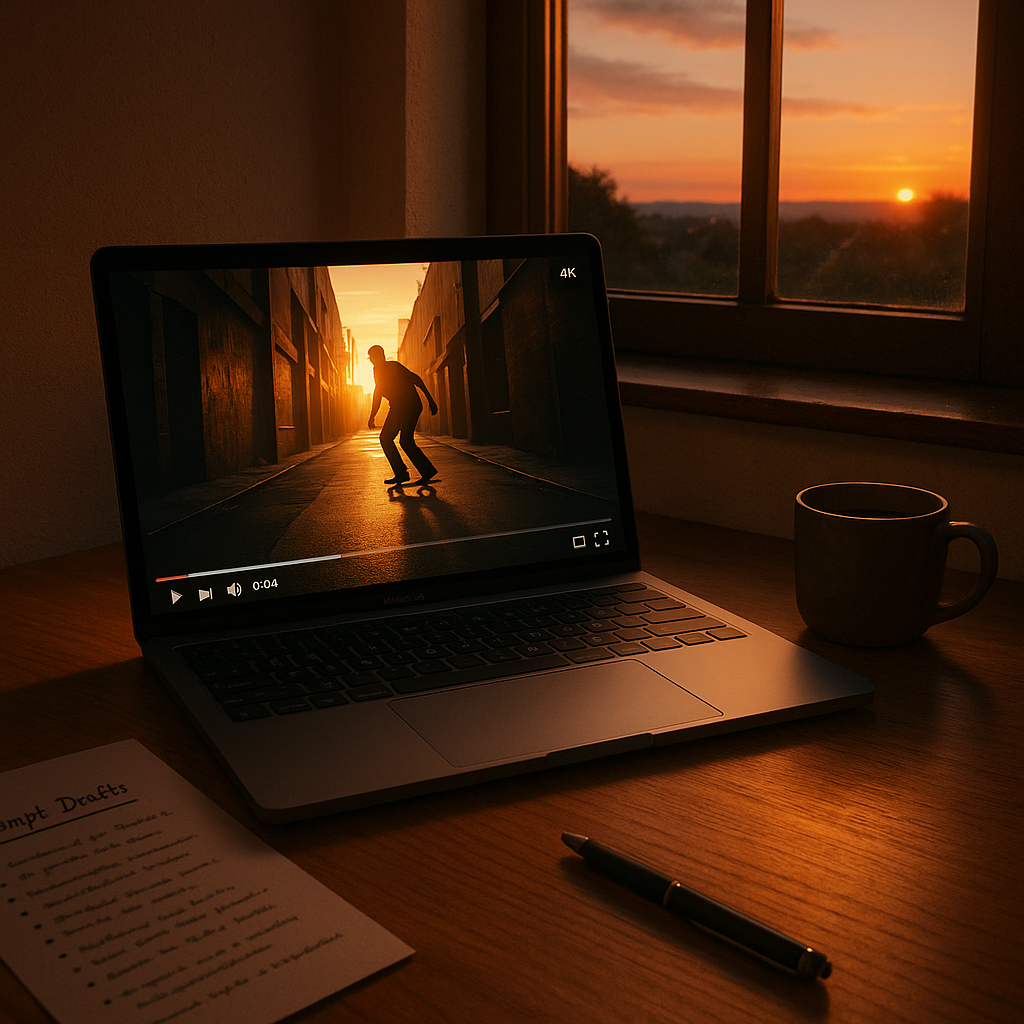Google Veo 3 and the Blurry Line Between Tool and Shortcut
Google Veo 3 pushes the edge of AI video. But are we still creating—or just prompting? A personal take on AI, creativity, and what comes next.

Hi, this is G.
So Google just dropped a demo of Veo 3 (see youtube video), and I’ve got thoughts — not just about the tech, but what it means for us, the makers, the tinkerers, and the storytellers.
Because if you’ve ever tried creating something from scratch — a video, a brand, even a blog like this — then maybe you’ve felt that tiny guilt creeping in when AI makes it “too easy.”
The Demo That Made Me Sit Up
I’ll be honest: I was casually doomscrolling post–Google I/O when I clicked on the 3-minute Veo 3 demo video.
And boom — cinematic shots, 4K clarity, smooth camera pans. But here’s the kicker:
It was all generated.
From a text prompt.
No camera. No actors. No editing rig. Just AI and intention.
What is Google Veo 3?
Here’s the quick rundown for those just tuning in:
- Veo 3 is Google’s newest text-to-video model from DeepMind.
- It generates 4K video with cinematic effects, consistent characters, and believable scene transitions.
- It understands prompt nuance — like camera direction, lighting, and emotion.
- It’s aimed at creators, educators, and marketers who want to turn words into visuals. Fast.
So yeah, it’s not just for fun. This is the beginning of a new creative operating system.
Cool Tech — But Is It Cheating?
Here’s where I got stuck.
Not technically — emotionally.
Because if I can type a prompt and get a video that looks like it was shot on location with a crew… is that still “my” creation?
If AI fills in the light rays, the motion blur, the subtle expressions — am I a director or just a typist?
“Where do we draw the line between AI as a tool vs a shortcut?”
That’s the real question Veo 3 raises. It’s not just “can it do this?” — it’s “what happens to us when it can?”
Practical Takeaways for Creators and Entrepreneurs
Whether you’re a filmmaker, a startup founder, or a content creator, here’s why this matters:
1. Faster Prototyping
Got an ad idea in your head? You don’t need to rent a studio. Just prompt it.
Want to storyboard a pitch deck? Veo 3 can give you visuals for every slide.
2. Cost Savings
AI-generated video could lower production costs by 80–90%. Great for small teams or solo founders trying to stand out online.
3. Leveling the Playing Field
You don’t need a Hollywood budget to tell a visually compelling story anymore.
You just need a good prompt and good taste.
But…
4. The Taste Gap Still Matters
The tool is powerful, yes. But it won’t replace your eye for detail, your feel for rhythm, your ear for story.
Veo can generate — but it won’t feel the story the way you do.
Real Talk: Where I’m At Now
I’ve been building more with AI lately — chatbots, automations, even content repurposing flows.
But this Veo 3 moment made me pause.
I love what’s possible.
I also fear what becomes too easy.
And I guess that’s what I’m learning:
AI doesn’t replace the journey. It just shortens the road.
But it’s still up to us to decide where that road leads.
Final Thoughts
So here’s my question to you:
When does using AI feel like cheating — and when does it feel like creativity unlocked?
If you’ve got thoughts, I’d love to hear them. Comment on the YouTube video, DM me, or just hit reply on my newsletter.
Because this is where the real conversation starts — not with the tech, but with how we choose to use it.
Till next post,
G